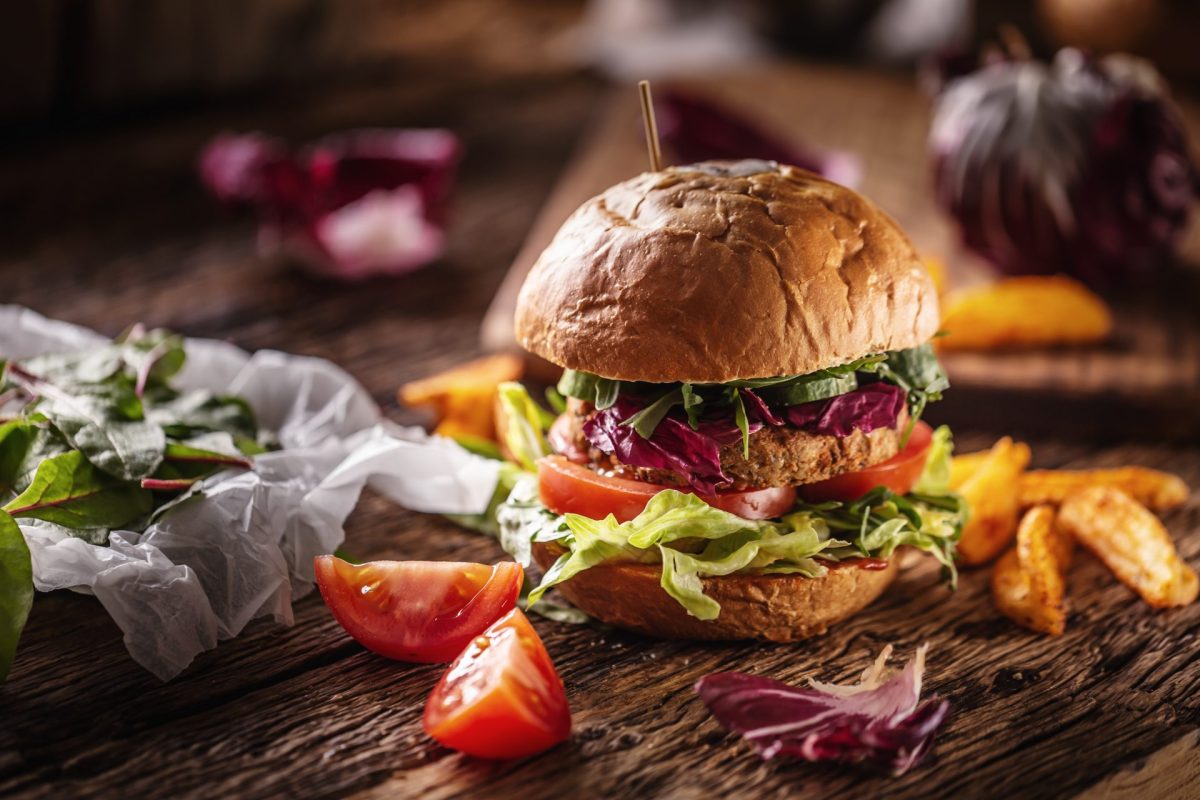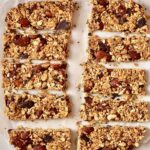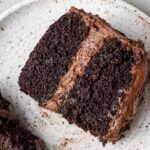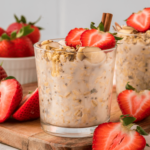Navigating a world of food allergies can feel overwhelming, but delicious and healthy eating doesn’t have to be a struggle. This guide provides a practical, step-by-step approach to creating simple, allergen-free meals that are both nutritious and satisfying. We’ll explore common allergens, their substitutes, and offer a wealth of easy-to-follow recipes for breakfast, lunch, dinner, and even baking. Get ready to transform your kitchen into a haven of allergy-friendly culinary delights, empowering you to confidently prepare meals for yourself and your loved ones.
From understanding cross-contamination risks to mastering the art of allergen-free baking, this guide equips you with the knowledge and tools to create flavorful and safe meals. We’ll delve into the nutritional aspects of allergen substitutions, provide time-saving tips for busy schedules, and offer a sample weekly meal plan to streamline your cooking routine. Whether you’re a seasoned cook or a kitchen novice, this guide offers a clear and accessible path to allergen-free eating.
Allergen-Free Baking Basics

Baking without common allergens like wheat, dairy, eggs, and nuts presents unique challenges, but delicious allergen-free treats are entirely achievable with the right techniques and ingredients. Mastering these techniques unlocks a world of culinary creativity, allowing you to enjoy your favorite baked goods while managing dietary restrictions. The key lies in understanding how different allergen-free flours behave and adapting recipes accordingly.
Challenges and Solutions in Allergen-Free Baking
Allergen-free baking often results in baked goods with different textures and tastes compared to their traditional counterparts. The absence of gluten, for example, can lead to crumbly textures, while substituting dairy can affect moisture and richness. However, these challenges can be overcome. Using a blend of flours often provides the best results, mimicking the properties of wheat flour more closely. Adding binding agents like xanthan gum or psyllium husk powder helps improve the structure and elasticity of the dough or batter, preventing excessive crumbliness. For moisture, ingredients like applesauce, mashed banana, or yogurt alternatives can be used effectively. Experimentation is key; adjusting ratios and adding flavor enhancers can create delicious results.
Simple Allergen-Free Chocolate Chip Cookies
This recipe uses almond flour for its nutty flavor and relatively easy handling. The result is a chewy, subtly sweet cookie perfect for satisfying a sweet craving.
Ingredients:
- 1 cup almond flour
- ½ cup coconut sugar
- ¼ cup unsweetened applesauce
- ¼ cup dairy-free chocolate chips
- 1 teaspoon vanilla extract
- ½ teaspoon baking soda
- ¼ teaspoon salt
Instructions:
- Preheat your oven to 350°F (175°C). Line a baking sheet with parchment paper.
- In a medium bowl, whisk together the almond flour, coconut sugar, baking soda, and salt.
- Add the applesauce and vanilla extract. Mix until a dough forms.
- Stir in the dairy-free chocolate chips.
- Roll the dough into small balls (about 1 inch in diameter) and place them onto the prepared baking sheet, leaving some space between each cookie.
- Bake for 10-12 minutes, or until the edges are lightly golden brown.
- Let the cookies cool on the baking sheet for a few minutes before transferring them to a wire rack to cool completely.
Image Description:
A close-up image shows a batch of freshly baked allergen-free chocolate chip cookies arranged on a wire rack. The cookies are golden brown around the edges, with slightly soft centers, and the dairy-free chocolate chips are visible throughout. The overall appearance is warm and inviting, suggesting a homemade, comforting treat.
Comparison of Allergen-Free Flours
Different allergen-free flours offer unique properties impacting texture and taste in baked goods.
| Flour Type | Properties | Uses in Baking |
|---|---|---|
| Almond Flour | Naturally sweet, slightly nutty flavor, absorbs moisture readily, can create dense baked goods if not balanced with other flours. | Cookies, muffins, cakes (often blended with other flours) |
| Coconut Flour | Very absorbent, adds a distinct coconut flavor, creates drier baked goods if not properly hydrated. | Muffins, pancakes (often requires more liquid than other flours), bread (when blended). |
| Rice Flour | Mild flavor, creates lighter and less dense baked goods than almond or coconut flour, can be slightly gummy if used alone. | Cakes, cookies, pie crusts (often blended with other flours for optimal texture). |
Planning & Preparing Allergen-Free Meals
Navigating the world of allergen-free cooking can feel daunting at first, but with careful planning and preparation, it becomes significantly easier and more enjoyable. This section provides a comprehensive, step-by-step guide to help you confidently create delicious and safe meals for yourself and your family, free from the worry of unwanted allergens. We will cover everything from strategic grocery shopping to efficient meal prepping and smart storage techniques.
Grocery Shopping for Allergen-Free Diets
Strategic grocery shopping is the cornerstone of successful allergen-free meal planning. A well-organized shopping trip minimizes wasted time and ensures you have all the necessary ingredients on hand. Careful label reading is paramount.
- Create a detailed shopping list based on your weekly meal plan. This prevents impulsive purchases of non-compliant items.
- Thoroughly check all food labels for potential allergens, even seemingly innocuous products. Look beyond the main ingredients list for hidden allergens listed in the “may contain” section.
- Prioritize purchasing whole, unprocessed foods. These tend to have fewer hidden allergens and are generally healthier.
- Shop at stores with a dedicated allergen-free section or a knowledgeable staff who can assist with locating suitable products.
- Consider purchasing allergen-free staples in bulk to save money and reduce the frequency of shopping trips.
Meal Prepping for Efficient Allergen-Free Cooking
Meal prepping is a game-changer for busy individuals and families managing allergen-free diets. By dedicating some time on the weekend to prepare ingredients or even complete meals, you can significantly streamline your weeknight cooking routine.
- Wash, chop, and portion vegetables and fruits for easy incorporation into meals throughout the week. Imagine a vibrant array of colorful bell peppers, neatly sliced onions, and pre-portioned broccoli florets, all ready to be tossed into stir-fries or added to soups.
- Cook grains like rice, quinoa, or gluten-free pasta in bulk. These form a versatile base for many meals.
- Prepare large batches of allergen-free sauces or stocks. A rich, flavorful tomato sauce, simmered with aromatic herbs and spices, can be the foundation for countless pasta dishes or pizzas.
- Assemble individual meal containers for grab-and-go lunches or dinners. This saves time and ensures portion control.
- Freeze extra portions of meals to extend their shelf life and provide quick meal options for busy days.
Storage Techniques for Maintaining Allergen-Free Foods
Proper storage is crucial for preserving the quality and safety of allergen-free foods. This prevents cross-contamination and ensures your ingredients remain fresh and free from allergens.
- Store allergen-free foods separately from those containing allergens to prevent cross-contamination. Imagine a designated shelf in your pantry, clearly labeled “Allergen-Free,” containing your carefully selected ingredients.
- Use airtight containers to keep foods fresh and prevent moisture absorption. This keeps your ingredients tasting their best for longer.
- Label all containers clearly with the contents and date of preparation. This aids in organization and helps to avoid waste.
- Follow recommended storage guidelines for specific foods, such as refrigeration or freezing temperatures.
- Regularly check for spoilage and discard any items that show signs of deterioration.
Sample Weekly Allergen-Free Meal Plan
This sample plan demonstrates how to incorporate the principles of planning and preparation into a practical weekly schedule. Remember to adapt this plan to your specific dietary needs and preferences.
| Day | Breakfast | Lunch | Dinner |
|---|---|---|---|
| Monday | Oatmeal with berries and nuts (ensure nut-free if needed) | Leftover chicken and vegetable stir-fry | Baked salmon with roasted asparagus and sweet potato |
| Tuesday | Scrambled eggs with spinach and gluten-free toast | Salad with grilled chicken or chickpeas | Lentil soup with gluten-free bread |
| Wednesday | Smoothie with fruit, vegetables, and allergen-free protein powder | Leftover lentil soup | Chicken and vegetable skewers with quinoa |
| Thursday | Gluten-free pancakes with fruit | Tuna salad sandwich on gluten-free bread | Shepherd’s pie with mashed sweet potatoes |
| Friday | Yogurt with granola (check for allergens) and fruit | Leftover shepherd’s pie | Homemade pizza on a gluten-free crust with dairy-free cheese |
| Saturday | Breakfast burrito with scrambled eggs and vegetables (in a gluten-free tortilla) | Large salad with grilled vegetables | Pasta with dairy-free pesto sauce and vegetables |
| Sunday | Waffles (gluten-free) with fruit and maple syrup | Leftover pasta | Roast chicken with roasted vegetables |
Embarking on an allergen-free culinary journey can be both challenging and rewarding. This guide has equipped you with the essential knowledge and practical recipes to make this journey smoother and more enjoyable. Remember, planning and preparation are key to success. By understanding common allergens, their substitutes, and employing safe food handling practices, you can confidently create delicious and nutritious meals tailored to your specific dietary needs. Embrace the creativity and flexibility that allergen-free cooking offers, and enjoy the satisfaction of nourishing your body with wholesome, allergy-safe food.
Q&A
Can I freeze allergen-free meals?
Yes, many allergen-free meals freeze well. Properly label and date containers for easy identification and optimal freshness.
Where can I find allergen-free ingredients?
Most large grocery stores carry allergen-free products. Specialty health food stores and online retailers also offer a wide selection.
How do I avoid cross-contamination when cooking?
Use separate cutting boards, utensils, and cookware for allergen-free foods. Thoroughly clean and sanitize surfaces between uses.
What if I accidentally consume an allergen?
If you experience an allergic reaction, seek immediate medical attention. Always carry your epinephrine auto-injector (if prescribed).


